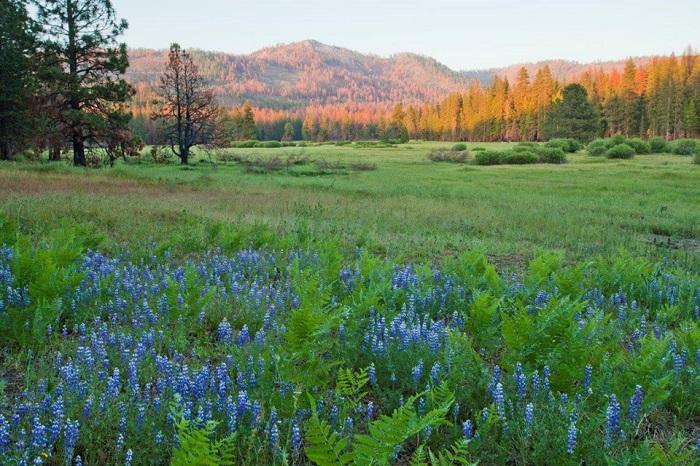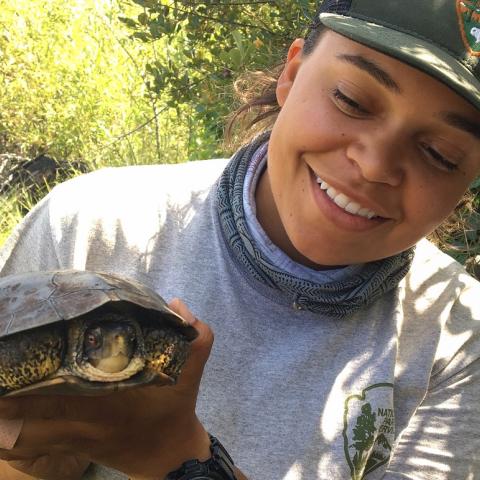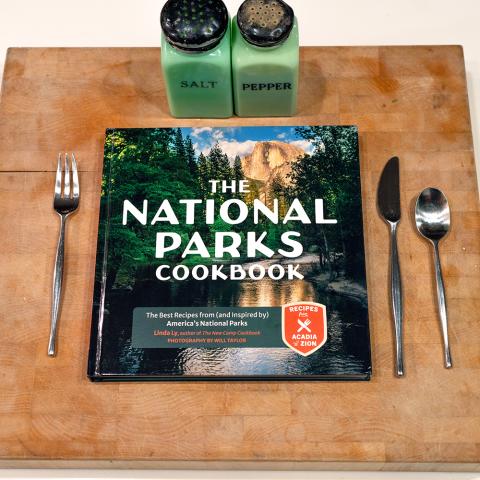
Ackerson Meadow provides habitat for hundreds of plant and animal species/NPS, Robb Hirsch
This week, Yosemite National Park grew by 400 acres, its largest expansion in nearly seven decades, with the donation of wetlands and meadow habitat along the park’s western boundary. The land, known as Ackerson Meadow, was donated through the cooperative efforts of the Trust for Public Land, Yosemite Conservancy, and the National Park Service.
“The generous donation of Ackerson Meadow will preserve critical meadow habitat that is home to a number of state and federally listed protected species,” Yosemite Superintendent Don Neubacher said in a release. “It’s a stunning open meadow surrounded by forest habitat, which supports a wide variety of flora and fauna species and offers new meadow experiences for park visitors. This meadow is a remarkable gift to the American people, coming at a historic time as we celebrate the centennial of the National Park Service.”
The Trust for Public Land purchased Ackerson Meadow from private owners for $2.3 million earlier this year and donated it Wednesday to the National Park Service to be part of Yosemite National Park. Funds to buy the property came from several major contributors to the Trust for Public Land, including a bequest of $1.53 million and $520,000 by the nonprofit Yosemite Conservancy, with additional support from National Park Trust and American Rivers.
“Donating the largest addition since 1949 to one of the world’s most famous parks is a great way to celebrate the 100th birthday of our National Park Service – and honor John Muir’s original vision for the park. We are delighted, and proud to make this gift to Yosemite, and the people of America,” Will Rogers, president of the Trust for Public Land, said in a release.
Historically, Ackerson Meadow has been used for cattle grazing, but the land provides critical habitat for hundreds of plant and animal species. At just 3 percent of Yosemite National Park’s area, meadows may be home to one-third of all of the plant species found in the park. Most of San Francisco’s water is filtered by Yosemite’s meadows, including Ackerson Meadow.
“The original Yosemite boundary plans of 1890 included Ackerson Meadow, so it is exciting to finally have this important place protected,” Yosemite Conservancy President Frank Dean said in a release. “The purchase supports the long-term health of the meadow and its wild inhabitants, and creates opportunities for visitors to experience a beautiful Sierra meadow.”
In recent decades, Yosemite Conservancy has funded restoration and protection of 10 meadows, such as Stoneman, Cook’s and Sentinel meadows in Yosemite Valley and Tuolumne Meadows in the high country.
Yosemite spokesman Scott Gediman told the Associated Press that this is the largest expansion of the park since 1949.




 Support Essential Coverage of Essential Places
Support Essential Coverage of Essential Places







Comments
Ethical, perhaps you are right. I was reading the limitations of Paragraph 2 as applying to all actions of Paragraph 1. On deeper inspection those limitations seem to only apply to the changes in (i) - minor boundary adjustments.
That is scary. If this is the only authorizing legislation, it basically says the Sec of Inteior could acquire massive lands with massive financial obligations with no authorization from Congress.
If that is the case, why have we used Congressional Authorizations for prior expansions?
The U.S. Fish and Wildlife Service acquires land by purchase and donation as a regular course of business and does not need Congressional approval for adding to refuges or establishing new refuges. By contrast, the NPS cannot establish a new park on its own and is restricted by law (as identified in this discussion) as to how much and how it can acquire land. For example, all newly acquired land must be contiguous with the current park boundaries.
CJ - As discussed earlier, the legislation I cited doesn't seem to require the NPS to get authorization. Yet, we have had many Congressional Authorizations in the past. Is there some other legislation that requires it? Perhpas Kurt could contact Bishop's office and ask where the requirement for Congressional Authorization is spelled out.